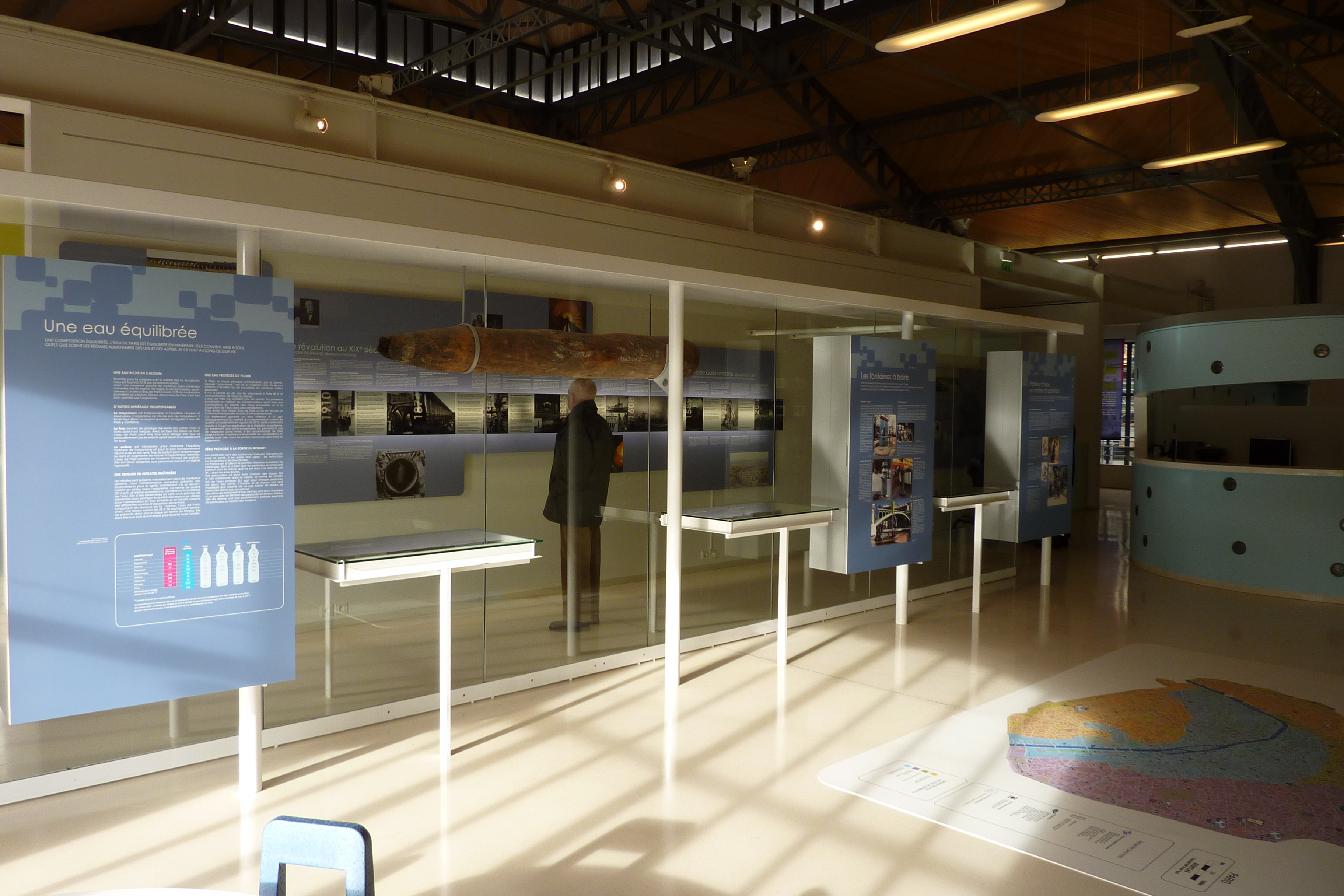Pavillon De L'eau on:
[Wikipedia]
[Google]
[Amazon]
The Pavillon de l'eau () is a museum devoted to
 ''Alimenter Paris en eau'' is an exhibition about the water supply of Paris and its history from Roman
''Alimenter Paris en eau'' is an exhibition about the water supply of Paris and its history from Roman
File:Exposition Les défis de l'eau.jpg
File:Exposition Seine parisienne.JPG
File:Exposition Bob l'Eponge.JPG
File:Le jour où la Seine débordera 01.jpg
File:Exposition Le trésor de l'Himalaya.JPG
File:Exposition Ta mere en tong.JPG
File:Exposition Metamorphoses des fluids.JPG
File:Exposition À boire, à voir.jpg
File:Exposition Enquete sur l'eau.jpg
File:Exposition Eau sur Mars.jpg
File:Exposition O! l'expo.JPG
Pavillon de l'eau
Eau de Paris official website
Paris official website
{{Authority control Museums in Paris Buildings and structures in the 16th arrondissement of Paris Water supply and sanitation in France Technology museums in France 2007 establishments in France Museums established in 2007
water
Water is an inorganic compound with the chemical formula . It is a transparent, tasteless, odorless, and Color of water, nearly colorless chemical substance. It is the main constituent of Earth's hydrosphere and the fluids of all known liv ...
belonging to the City of Paris and managed by Eau de Paris, the municipal agency in charge of production and distribution of water in Paris. The Pavillon de l’eau offers a permanent exhibition about the water supply history of the city, temporary exhibitions, children's activities (educational workshops, screenings, performances etc.) and thematic meetings.
The Water Pavilion, i.e. factory A, as well as factory B and its metal staircase, have been listed as historical monuments since January 30, 2020.
History
In 1828, on the ancient road to Versailles, asteam pump
A pump is a device that moves fluids (liquids or gases), or sometimes Slurry, slurries, by mechanical action, typically converted from electrical energy into hydraulic or pneumatic energy.
Mechanical pumps serve in a wide range of application ...
was installed in order to pump water from the Seine
The Seine ( , ) is a river in northern France. Its drainage basin is in the Paris Basin (a geological relative lowland) covering most of northern France. It rises at Source-Seine, northwest of Dijon in northeastern France in the Langres plat ...
to supply the municipalities of Auteuil and Passy
Passy () is an area of Paris, France, located in the 16th arrondissement of Paris, 16th arrondissement, on the Rive Droite, Right Bank. It is adjacent to Auteuil, Paris, Auteuil to the southwest, and Chaillot to the northeast.
It is home to many ...
.
By the end of the nineteenth century, the old steam pumps were obsolete. Consequently, the City Council of Paris voted the construction of a new pumping station to replace the previous one with newer technology. The station (named station A) consisted of two buildings, the engine room and boiler room, both characterized by a brick structure and large roofs topped by skylights to allow sufficient ventilation and lighting.
However, the new pumping station became outdated, especially regarding its coal consumption. So at the end of the First World War
World War I or the First World War (28 July 1914 – 11 November 1918), also known as the Great War, was a World war, global conflict between two coalitions: the Allies of World War I, Allies (or Entente) and the Central Powers. Fighting to ...
a new project was launched to attach a new pump to the previous one, referred to as station B, which was electrically powered. In 1955, station A was dismantled and the engine room became primarily used as a garage, and then as an office for administrative services until 2007, when the Pavillon de l'eau was inaugurated.
Permanent exhibition
aqueducts
Aqueduct may refer to:
Structures
*Aqueduct (bridge), a bridge to convey water over an obstacle, such as a ravine or valley
*Navigable aqueduct, or water bridge, a structure to carry navigable waterway canals over other rivers, valleys, railw ...
to nowadays.
Paris was born and grew up with water. Since the beginning of our times, when Paris was still called Lutetia
Lutetia, ( , ; ) also known as and ( ; ; ), was a Gallo-Roman culture, Gallo–Roman town and the predecessor of modern-day Paris. Traces of an earlier Neolithic settlement () have been found nearby, and a larger settlement was established ...
, the city has experienced four different periods of production and distribution of water. The Roman age
In modern historiography, ancient Rome is the Roman people, Roman civilisation from the founding of Rome, founding of the Italian city of Rome in the 8th century BC to the Fall of the Western Roman Empire, collapse of the Western Roman Em ...
, the Middle Ages
In the history of Europe, the Middle Ages or medieval period lasted approximately from the 5th to the late 15th centuries, similarly to the post-classical period of global history. It began with the fall of the Western Roman Empire and ...
, the Modern era
The modern era or the modern period is considered the current historical period of human history. It was originally applied to the history of Europe and Western history for events that came after the Middle Ages, often from around the year 1500 ...
and the nineteenth century Industrial Revolution
The Industrial Revolution, sometimes divided into the First Industrial Revolution and Second Industrial Revolution, was a transitional period of the global economy toward more widespread, efficient and stable manufacturing processes, succee ...
.Introduction to ''Alimenter Paris en eau'', Eau de Paris, Pavillon de l'eau, 2010
Temporary exhibitions gallery
Notes and references
External links
Pavillon de l'eau
Eau de Paris official website
Paris official website
{{Authority control Museums in Paris Buildings and structures in the 16th arrondissement of Paris Water supply and sanitation in France Technology museums in France 2007 establishments in France Museums established in 2007